Out Of Step Wine Co.
Château Latour
Premier Grand Cru Classé Pauillac Red Bordeaux Blend 1996
1996 vintage. At Hotel TerraVina with my pal, Gerard Basset MW. Unfortunately we didn't get time to decant it sufficiently prior to having with lunch. Typically I would have had at least a 2 hour decant before serving. Medium garnet hue, very bright. The nose is simply stunning and evolved constantly in the glass. Blackberry, black plum, cedar wood, lots of spices, cocoa and hints of roasted coffee bean. Tertiary notes have developed but there still seems to be a bit of development to be teased out of this wine yet. The palate exhibited an enormous amount of structure - high acidity and high tannins that are ripe but chunky. There's nothing round here - more linear and angled than curvy. Almost light bodied but with a big two-step punch of a finish: there's an initial hit and then a powerful umph of additional rev's that makes your head bob up and down in joy and happiness. Though it's drinking extremely well now, this will hold for decades to come. Fabulous. — 8 years ago
Domaine Alain Chavy
Puligny-Montrachet Chardonnay 2013
As I learn about some of these better White Burgundies, the element or really more a "consistent trait" is a simple joy that flows onto the palate that's like a warm smile from the right gal at the big party. Nothing at all sinister- just that warm welcome that promises to bring a good time along with it. The nose seems right in step with the aforementioned grin, with notes of nougat, golden-hued wrapped in a subtle, near-neutral bit of barrel. As it has breathed it's shifted into a more "relaxed gear", and is spreading out, revealing more of itself. Reaching the back of the palate and leisurely 'becoming' a finish it reflects the best bits of its strengths on the mid-palate.
#IpaidforthisoneoitnofnpocketandgladIdid — 8 years ago
Teutonic Wine Co - Weingut Ackermann
Zeltinger Himmelreich Riesling 2013
@Delectable Wine this is the 2013 Term Mosel Riesling made by Teutonic Wine Co. and Weingut Ackermann.
Awesome project. Small site Mosel Riesling in Teutonic's high and dry style. Florals lilt out of the glass. Laser sharp acidity, 🍑 and 🍐. — 9 years ago
Sanguis
My Soul Is Rested Proprietary Red Blend 2013
Super interesting co-fermented blend of 45% Petite Sirah, 45% Roussanne, 6% Grenache and 4% Syrah.
Deep and dark purplish red. Layered nose with tons of dark chocolate floating out of the glass. Layers of dark berries, black pepper, white pepper, purple floral notes, spices and herbs. Got a bit more savory and gamey as it opened up. Moderate tannins (6.6/10) and medium plus body. Kept getting fuller as it breathed. Big and juicy with dark cocoa, tight dark berries, bramble, dark spices, a touch of heat and anise in the finish. Long and lingering finish. Quite heavy and needs some time to fully integrate. Great wine. Drink from 2019 till 2026.
Need to go grab a few more tomorrow! — 9 years ago
Anheuser-Busch
Bud Light Lime Lager
Drank a 2011 & 2012 Colgin Cariad last night for my 21st birthday and a 2012 Peter Michael "Au Paradis" #1 wine of the year courtesy of my step-dad Martin. It was indeed an incredible evening. This evening, I picked up the tab today on my 1st legal purchase on this 2016 Bud Light Lime......let me tell you., it is drinking like a million bucks!!!!
Great Nose, slightly fruity with a bubbly finish. Tried to Ck out the legs but they fell flat. I recommend this vintage to everyone! @Martin G Rivard — 9 years ago


Skinner
Dry Diggings Red Rhone Blend 2012
Great things coming out of Amador Co. — 10 years ago
Union Wine Co.
Oregon Pinot Gris
Wine is best out of a can — 10 years ago

Stone Brewing Co.
RuinTen Triple IPA 2015
Boom! Stone kills it again! Do you like long walks on the beach during a full moon? Sauvignon Blanc with floral overtones? Foreign movies with subtitles? Then you will HATE this beer, you little pansy! Man up, grab a bottle, and step into manhood/womanhood. The bottle says it all; "A stage dive into a mosh pit of hops". And they are not talking about a 311 stage dive. More along the lines of a Korn/Godsmack stage dive. — 10 years ago
Bedrock Wine Co.
Compagni Portis Vineyard Gewürztraminer Blend 2013
If honeysuckle were made out of slate and you could drink it, this would be a very close approximation. — 11 years ago
Stone Brewing Co.
Enjoy By IPA
Prob one of the best IPAs I've ever had even if the enjoy by is a month out — 12 years ago
Rene Rostaing
Ampodium Côte-Rôtie Syrah 2010
2010 was a very good vintage in Rhône. Rostaing is a well know producer with people that know and drink Northern Rhône wines, not so much with others that do not. The Ampodium is the entry level into Rene & Pierre Rostaing wines. It is a blend of 13 vineyards in Northern Rhône. They are simply one of the very best producers in the region. I spent an afternoon with Rene & his son Pierre tasting in the their cellar and in their La Landonne vineyard as shown in the photos. The 2010 is drinking beautifully with many good years ahead. On the nose; ripe & slightly stewed/baked fruits of; blackberries, dark cherries, strawberries, creamy raspberries, stewed plum, black raspberries, cherries, steeped fruit tea, dry crushed rocks, iron pan, some white & black pepper, bacon fat, grilled savory meats, pork, black licorice, black cherry cola, decayed & fresh red florals with violets. The body is round and medium full. The tannins round, still a little chewy & around 55% resolved. The length, texture, tension and balance are in near perfect harmony. The fruits are; round, ruby & ripe; slightly stewed/baked fruits of; blackberries, dark cherries, strawberries, creamy raspberries, stewed plum, black raspberries & cherries. Steeped fruit tea, dry crushed rocks, chalky minerals, iron pan, coffee grounds, spice, some baking spices w/hints of vanilla, white & black pepper, drying blood, dry herbs/bay leaf, dry stems, moderate levels of bacon fat & pork, grilled savory meats, black licorice, black cherry cola, decayed & fresh red florals with fresh violets for days. The acidly is round and dripping. The long finish is plush, velvety delicious and lasts & lasts. In good vintages, I would put this in blind with the best of of the best new world wines from any vintage that many love; SQN, Booker, Saxum, Alban, Cayuse, Horsepower etc.. I’d bet most of you would pick it over these producers that cost much more $$$. It’s simply one of the best pound for pound wines/producers for this varietal. Especially, for the $$$. Wow, what a wine for the $. $55 upon release. Photos of; Winemaker Pierre Rostaing and our group in their La Landonne vineyard, the small sign that barely identifies their Estate, an example of the Quartz mineral that runs throughout their La Landonne vineyard and the view back onto the river from the top of the very steep La Landonne Vineyard. Producer notes and history...Rene Rostaing produced their first wine in 1971. However, it took almost three decades before wine became a full time occupation for Rene Rostaing. Domaine Rene Rostaing came about through marriage. The wife of Rene Rostaing was the daughter of the famed Cote Rotie grower, Albert Dervieux, and the niece of Marius Gentaz-Dervieux who gave Christine the vineyard land that became the Northern Rhone estate for Rene Rostaing. Through inheritance from Albert Dervieux Thaize (his father-in-law) who retired in 1990, and from Marius Gentaz Dervieux, his uncle, Rene Rostaing expanded his holdings, giving him some of the best terroir in Cote Rotie. The new vineyard land was basically 3 small parcels in the La Landonne, Cote Brune and Vialliere lieux-dits. This initial expansion from his initial tiny parcel, allowed Rene Rostaing to change careers and become a full time vigneron. Since 2007, the estate has managed by Pierre Rostaing, (son) of Rene Rostaing. Currently Rene Rostaing owns 7.5 hectares of vines that is spread out among 20 different parcels located in 14 locations. Perhaps the most celebrated vines of Rene Rostaing are the 1.6 hectares of vines they own in the La Landonne vineyard (photo). On La Landonne, the vines are more than 60 years old. Some vines are even close to 100 years of age! Those are his largest holdings. The smallest vineyards of Rene Rostaing are located on Cote Blonde. Rene Rostaing also has vines planted in; Fonjean, La Vialliere, Le Plomb, Bouchare, Leyat, La Roche and La Tupin. Their oldest vines are more than 70 years old and are used for Rene Rostaing Cote Blonde. The majority of those plantings are on the steep hillsides with mica, schist and rocky soils. 25% of those vines are closer to the bottom of the slopes and on the flats. Rene Rostaing remains a traditional Cote Rotie producer who is not among the last to harvest. His wines are aged using very little new, French oak barrels. On average, Rene Rostaing Cote Rotie are aged in about 10% new French oak barrels. Rene Rostaing produces 4 different Cote Rotie wines. Rene Rostaing Ampodium, which was previously known as Rostaing Cuvee Classique, is a blend of 13 sections of different vineyards, but it does not include their best holdings on La Landonne or Cote Blonde. The fruit for Rene Rostaing Ampodium has at least 40% or more of the stems removed and run between 12-13.5% abv. The wine is usually made from 100% Syrah and is aged in an average of 15% to 25% new, French oak barrels. The amount of new oak can be less, depending on the character of the vintage. About 1,750 cases are produced each year. The wine is no longer called Cuvee Classique, the name was changed to Rene Rostaing Ampodium with the 2009 vintage. Rene Rostaing La Landonne comes from a terroir consisting of sands with iron oxide and traces of quartz. This wine is always produced from 100% Syrah. The grapes are partially destemmed, with about 10% to 20% of the stems removed, depending on the vintage. There are vintages when no destemming takes place. The remainder of the grapes are whole bunch fermented in stainless steel vats. Rene Rostaing is not a believer of using too much new oak for the aging, which on average uses 10% new, French oak barrels and the remainder of the harvest is aged in demi-muids (600 liter) and French oak barrels. This wine is like most wines from La Landonne, masculine and meaty in character, requiring at least a decade to soften and develop. On average, Rene Rostaing La Landonne produces less than 600 cases depending on what the vintage delivers. Rene Rostaing Cote Blonde is perhaps his best. It’s produced from a blend of 95% Syrah and 5% Viognier. The grapes are co-fermented. The vineyards is planted in the region call Arzel. Arzel is a poor, mineral laden soil with deposits of Silex and Mica on a steep hillside. The vines are more than 50 years of age. The grapes are partially destemmed…35% to 50% of the stems are removed. The remainder of the grapes are whole bunch fermented in stainless steel vats.
The remainder of the harvest is aged in demi-muids. This one is the hardest to find and most collectible of all their wines. In fact, they only produce close to an average of 350 cases of Cote Rotie in most vintages. Rene Rostaing Cote Brune made its debut with the 2013 vintage. The vines were once part of the holdings of Marius Gentaz, which eventually passed to Rene Rostaing. Rostaing replanted those vines in 2000. Made from 100% Syrah. — 8 years ago
Inwood Estates
Texas Tempranillo Cabernet 2009
The curveball out of our 4 reds! This was red number three and at the end, 1,2 and 4 would all be bordeauxs. After 1 and 2, it was easy to identify this as more new world. I didn't guess Tempranillo, (I guessed old Napa cab), but appreciated a TX wine as there seems to be a step up in TX quality over the last few years. Spicy, plum filled, and well integrated at this point. — 9 years ago
Bedrock Wine Co.
North Coast Syrah 2014
I had very high expectations for this wine. I had heard a lot of very good things about Bedrock. This was my first one.
It came out of the bottle hot. Despite a couple of hours, it remained mostly hot. Strawberry and cassis on the nose. Definite American oak. A slightly bitter and metallic finish.
I was surprised to read the back label that claimed this was cool climate. It doesn't feel like that at all.... — 9 years ago

For the same price, the Beckmen Syrah I had was much better

Eric Rodez
Grand Cru Millésimé Champagne 2007
Almonds, ginger ale, peaches. Very rich. I have a wine shop for you to check out @Donna Saxton. Elie Wine Co., in Birmingham. Amazing selection of mostly French and Spanish wines with a nice selection of Champagne. — 10 years ago
Samsara Wine Co.
Santa Barbara County Syrah 2012
A deep, dark, murky, inky creature of a wine. Expresses powerful blackberry and blueberry fruit laced with ample nutmeg and pepper notes. Drinks full blooded and thick bringing out the carnivore in all of us.
Cheers! — 10 years ago
Badet Clément & Co.
Pontificis Grenache Blend 2012
Perfect with red pastas, sautéed crimini mushrooms, and even meaty pizzas. Because of the affordable price, I will probably stock up. I now understand why it is always sold out on this app. — 11 years ago
Clos du Val Wine Co.
Carneros Chardonnay 2008
First use of coravin. Glad to have practiced on this fine 7 year old chardonnay. Balanced citrus notes. Nice lasting finish. Not too buttery. Mix it with some seared tuna, grapefruit and a string of alfalfa in your mouth to bring out the floral notes of the wine. — 11 years ago
Samsara Wine Co.
Melville Vineyard Syrah 2010
Exciting stuff coming out of the central coast — 12 years ago
Château Brane-Cantenac
Grand Cru Classé en 1855 Margaux Red Bordeaux Blend 2005
I have a six-pack of this 05. I thought after 10 years in bottle, it would be interesting to check in on its evolution. While tasty, I’ll wait another 8-10 to open another. Even after 2-3 hours in the decanter, it’s still a very young adolescent. On the nose, slightly sour blackberries & dark cherries, dark currants, baked black plum, haunting blue fruits, anise, whiff of spice, steeped tea, dry stones, dry crushed rocks with dry top soil, caramel, vanilla with fresh & dry red florals. The body is thick & full. Tannins are starting to round out. It’s velvety on the palate. The fruits are; bright, fresh & ripe and really show the greatness of the 05 vintage. Dark currants, blackberries, dark cherries, baked black plum, haunting blue fruits, baked strawberries, cherries, raspberries on the long set, dark spice, clay & loamy dry top soil with crushed rocks, dry stones, cigar with ash, graphite, dry stems, slight herbaceous character, mint, used leather, clove, caramel, vanilla, fresh & dry red florals with violets. The round acidity is about perfect. The structure and length are still strong. The balance is in harmony. As for the long finish, it’s lush, ruby, rich and well polished. Photos of; Chateau Brane Cantenac, large wood vats, Henri Lurton and Estate vines. Producer notes and history...Chateau Brane Cantenac began in the early 17th century. At the time, the estate was known as Domaine Guilhem Hosten. Even that far back, wine was produced from the property. In fact, the wine was so highly regarded it was one of the more expensive wines in Bordeaux. It sold for almost as much money as Brane Mouton. This is interesting because of who went on to buy the vineyard in the 1800’s. The Baron of Brane, also known as “Napoleon of the Vineyards”, purchased the Chateau in 1833. At the time of the sale, the estate was called Chateau Gorce-Guy. To get the funds needed to purchase the Margaux vineyard, the Baron sold what is now called Mouton Rothschild, which was at the time of the sale, known as Chateau Brane-Mouton. Not such a good move with hundreds of years in hindsight! In 1838, the Baron renamed property taking his name and the name of the sector where the vineyards were located and called it Chateau Brane Cantenac. The Chateau later passed to the Roy family, who were well-known in the Margaux appellation in those days, as they owned Chateau d’issan. Moving ahead to 1920, the Societe des Grands Crus de France, a group of merchants and growers that owned several chateaux located in the Medoc including; Chateau Margaux, Chateau Giscours, and Chateau Lagrange in St. Julien, purchased Chateau Brane Cantenac. Five years later, M. Recapet and his son-in-law, François Lurton, took over Brane Cantenac along with Chateau Margaux. Lucien Lurton (the son of François Lurton) inherited Brane Cantenac in 1956. Today, the estate is still in the hands of the Lurton family. Brane Cantenac is owned and run by Henri Lurton. After being given the responsibility of managing Brane Cantenac, it was under the direction of Henri Lurton that large portions of the vineyard were replanted. Vine densities were increased, the drainage systems were improved and the plantings were also, slowly changed. The vineyard of Brane Cantenac is planted to 55% Cabernet Sauvignon, 40% Merlot, 4.5% Cabernet Franc and .5% Carmenere. Carmenere was used for the first time in the 2011 vintage. The only other Chateau I know that still uses Carmenere is Clerc Milon. The 75 hectare Left Bank vineyard of Brane Cantenac is essentially unchanged since it earned Second Growth status in the 1855 Classification. At least that is the case with the 45 hectares used to produce the Grand Vin of Brane Cantenac. Those 45 hectares are planted surrounding the Chateau. Those vines are located just in front of the Cantenac plateau and are the best terroir that Brane Cantenac owns. They have other parcels, which are further inland and much of those grapes are placed into their second wine, Le Baron de Brane. Those additional hectares can be divided into 3 main sections. Behind the Chateau, they have 15 hectares of vines on gravel and sand, 10 hectares across the road with sand, gravel and iron and a 13 hectare parcel with gravel called Notton, which is used for their second wine. The vineyard is planted to a vine density that ranges from 6,666 vines per hectare on the plateau and up to 8,000 vines per hectare for the vines located behind chateau, in their sandier soils. The higher levels of vine density are always found in the newer plantings. The terroir of Brane Cantenac consists of deep gravel, sand and clay soil. Experiments in the vineyards are currently looking at becoming more organic in their vineyard management. Today, more than 25% of Brane Cantenac is farmed using organic farming techniques. It is expected that over time, the amount of hectares farmed with organic methods will be increased. Brane Cantenac has gone through 2 relatively recent modernization’s in 1999, when they added began adding the first of their smaller vats to allow for parcel by parcel vinification and then again in 2015 when they completed a much more complete renovation of their cellars and vat rooms. While Brane Cantenac is a traditional producer, they are no stranger to technology as they were one of the first estates to embrace optical grape sorting machines. In very wet vintages, they can also use reverse osmosis. To produce the wine of Chateau Brane Cantenac, the wine is vinified in a combination of temperature controlled, traditional, 22 oak vats, 18 concrete tanks and 20 stainless steel vats that vary in size from 40 hectoliters all the way up to 200 hectoliters, which allows for parcel by parcel vinification. 40% of the fermentation takes place in the oak vats. The oldest vines are vinified in vats that are selected to allow for separate parcel by parcel vinification. The younger vines are vinified more often together in the same vats. However, the Carmenere is entirely micro-vinified, meaning that those grapes were completely vinified in barrel, using micro-vinification techniques. This can also happen because the amount of grapes produced is so small. Some vats can be co-inoculated, meaning they go through alcoholic fermentation and malolactic fermentation simultaneously. At Chateau Brane Cantenac, malolactic fermentation takes place in a combination of French oak tanks and barrels. The wine of Brane Cantenac is aged in an average of 60% new, French oak barrels for 18 months before bottling. The initial 2 months of aging is done with the wine on its lees, which adds more depth to the wine. There second wine is Le Baron de Brane. Le Baron de Brane is not new. In fact, previously, the second wine went under the name of Chateau Notton, which took its name from one of the main parcels where the grapes were planted. During the late 1950’s and into the 1960’s, having a second wine was important as the estate declassified 3 vintages, due to extremely poor, weather conditions in 1956, 1960 and 1963. Production of Chateau Brane Cantenac is about 11,000 cases per year. — 8 years ago

Bedrock Wine Co.
Old Vine Sonoma Valley Zinfandel
Dark red cherry, plum, spices, licorice and menthol flesh out in the 2012 Zinfandel Sonoma Valley Old-Vine. Hints of tobacco, dried herbs and black cherry linger on the close. This plump, juicy Zinfandel offers tons of near and medium-term appeal. (AG) — 9 years ago
Out of Step Wine Co.
Malakoff Estate Vineyard Nebbiolo 2014
Great Nebbiolo at this price — 9 years ago
Enfield Wine Co.
Heron Lake Vineyard Chardonnay 2014
Starts out with a whiff of Napa aromatics on open but gives way to lemon curd salinity, quartz minerality and loooooooong Chablis- like finish. Run, don't walk! 2014 vintage — 9 years ago
H Blin & Co
Millésimé Brut Champagne Blend
We busted out a couple bottles of Blin for Easter brunch. Great stuff and a crowd pleaser. #puppyphotobomb — 10 years ago
Out of Step Wine Co.
Chardonnay
Sweet oak is seem less. Reasonably narrow on the palate. — 10 years ago
Stone Brewing Co.
Ruination Double IPA
After finding out I have rated quite a few beers on Delectable, a friend asked me if I'm one of those pompous jerks who writes insanely long reviews thinking people actually care about my opinion. In honor of this question: Me like Ruination 2.0. Heap good beer. Make tummy happy. Make tongue tingly. Now me go kill dinner. — 11 years ago
Save Me San Francisco Wine Co.
Soul Sister Pinot Noir 2013
Not bad, might have to search out a bottle. Just got off of the plane, Ruth's Chris right across the street from the hotel, steak must have been calling. — 11 years ago
Corner Creek Distilling Co.
Corner Creek Reserve Bourbon Whiskey
This was very smooth clean finish with out the bite. One of the top bourbons I have had. — 12 years ago





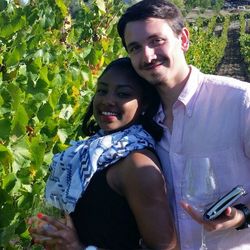



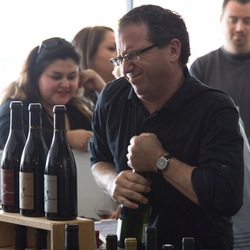

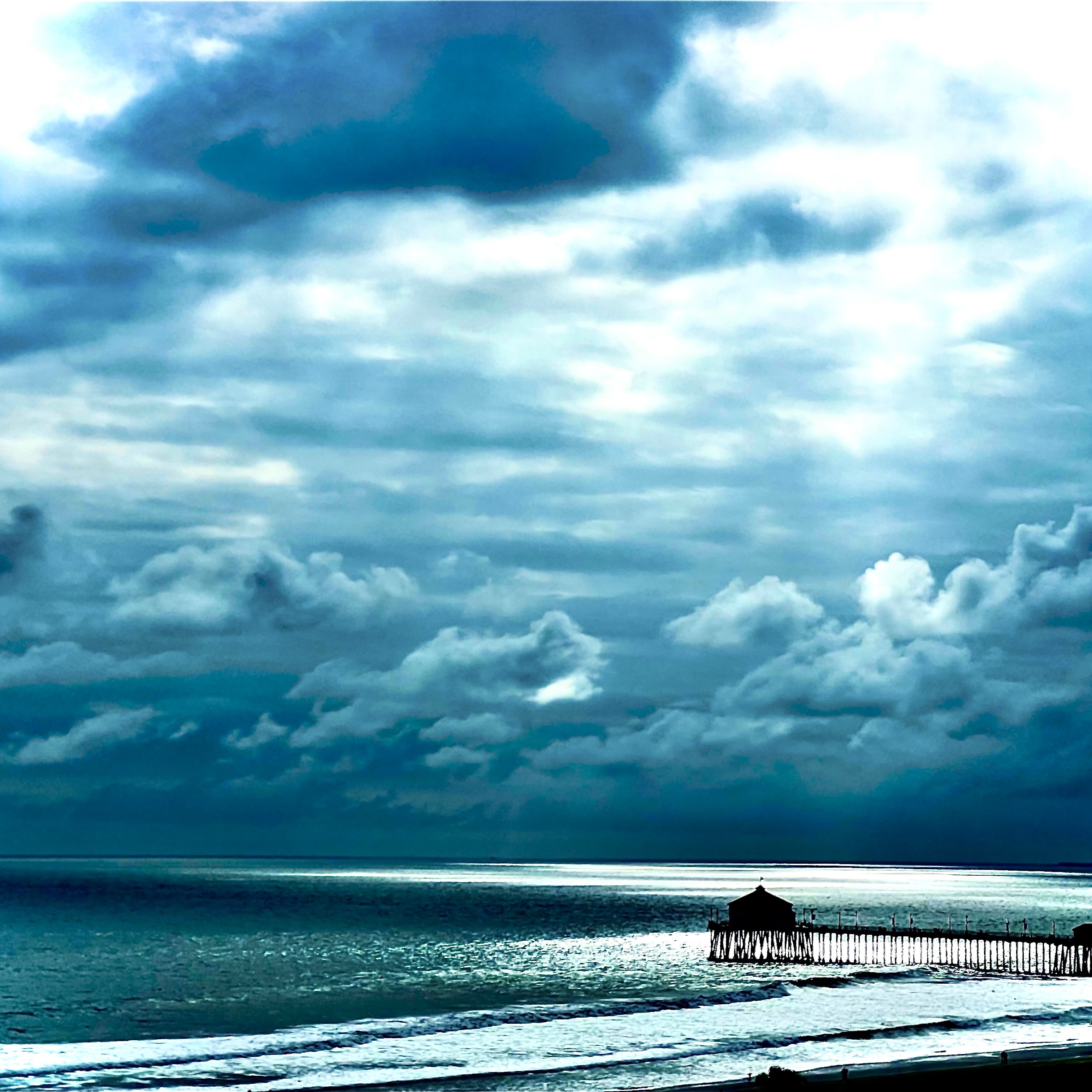
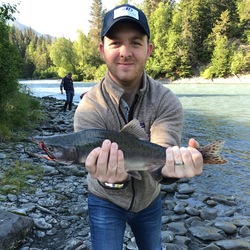

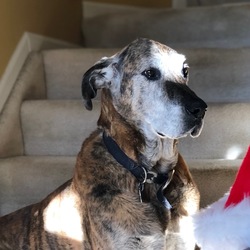




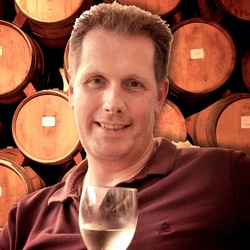
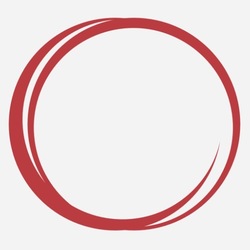


Pinotman /// Andreas
Chablis on Steroids! And sold out at the website! Pretty good acid so I do not agree with another reviewer on this one. More Mandarin than Pear. Even a lovely touch of bitter. Low%. A great wine 😎. Should have bought more! An artist at work. — 8 years ago